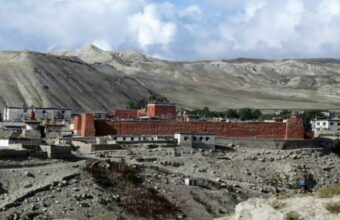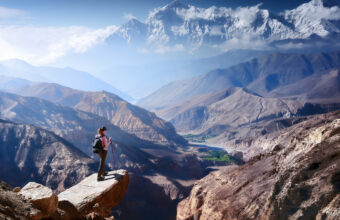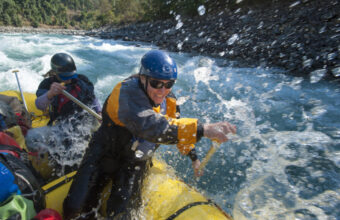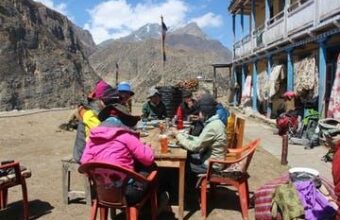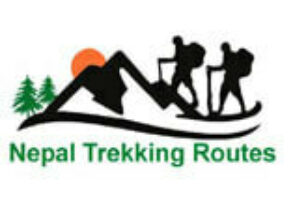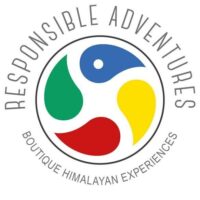Upper Mustang treks
Quieter hikes through Nepal's cultural heartlands
Beyond the highest Himalayan peaks, up on the northern border with Tibet, is Upper Mustang. I find trekking in Upper Mustang a world apart to the rest of the country; here it's less about the awe-inspiring scenery of most Nepal treks and more of a cultural experience.
Long shrouded in mystery and closed to outsiders until 1992, the former Kingdom of Mustang (the last, much-loved, king sadly died in December 2016) is a high-altitude desert of multi-hued gorges, green oases, fairy-tale gompas, prayer flags and blood red fortified monasteries.
This is a land so rich in traditional Tibetan Buddhist culture that I find it feels more classically Tibetan than the modern Chinese region of Tibet itself.
I'd recommend trekking in Upper Mustang to anyone who's looking for something totally different to the standard fare. Although the standard Upper Mustang trek has been undermined by heavy road construction, the Upper Mustang Loop is still a firm favourite.
Ready to go? Here's a guide to my favourite Upper Mustang treks.
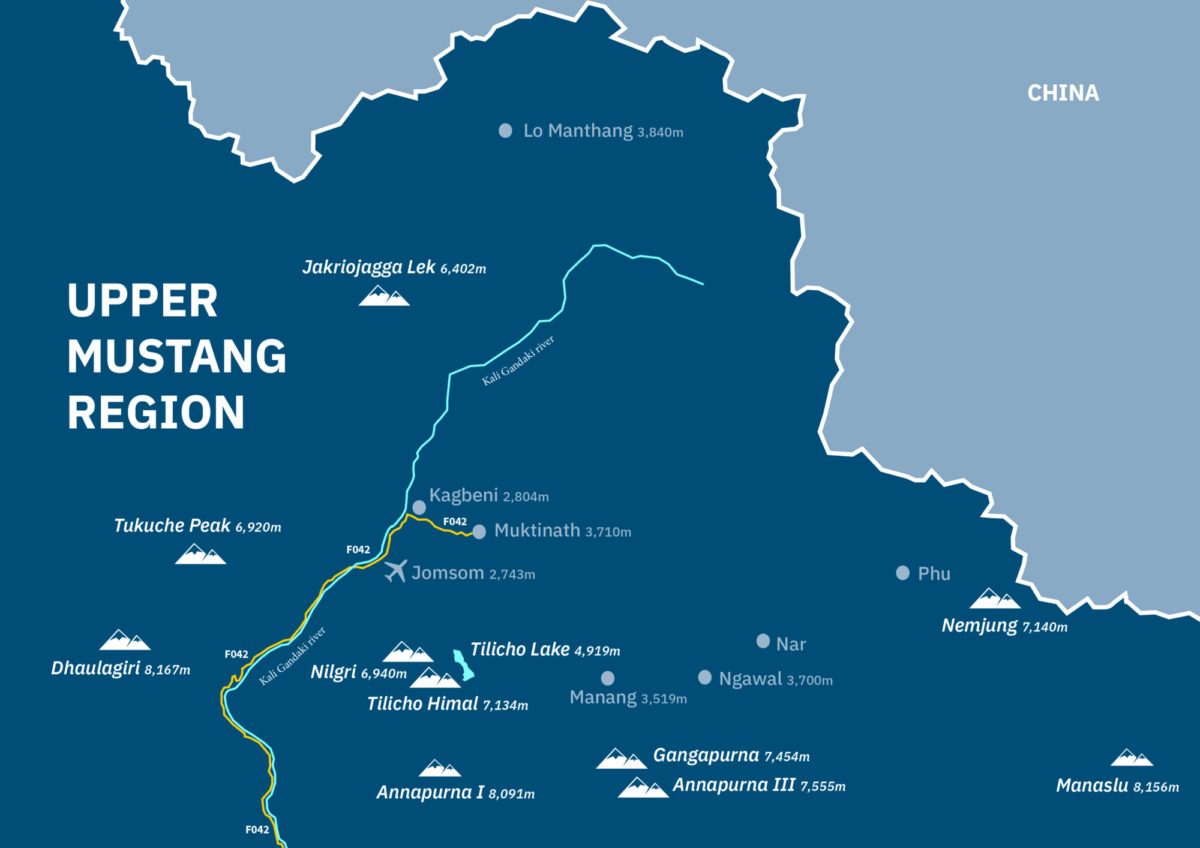
Upper Mustang trekking route map
The best Upper Mustang treks
Upper Mustang standard trek
Upper Mustang standard trek
- Difficulty: Moderate
- Trek Duration: 10 days.
- Max. Elevation: 4,325m
- Accommodation: Homestays.
- Start/End Point: Kagbeni
The standard 10-day trek is straight up and down from Kagbeni to Lo Manthang (You can start walking directly from the airstrip at Jomsom. For this part of the walk you don’t need the expensive restricted area permit of Upper Mustang).
The standard route takes you up the western, more developed, side of the Kali Gandaki river and passes multi-coloured canyons and over wind-blasted passes (the highest is 4,325m). Each night you will stay in a small fortified village built around a monastery with accommodation in guesthouses rich in Tibetan atmosphere. It takes four days to walk from Kagbeni to Lo Manthang and the same for the return leg. This allows two full days in Lo Manthang, which is really the minimum required to explore the town and nearby monasteries and caves.
An important note: road construction along the western side of the Kali Gandaki river is quickly bringing change to villages along this route and lots of the standard route now follow dusty roads rather than trails. For this reason I can't really recommend the standard route, but I still highly recommend routes on the eastern side of the river.
Upper Mustang loop
Upper Mustang loop
- Difficulty: Moderate-difficult
- Trek Duration: 12 days.
- Max. Elevation: 4,380m
- Accommodation: Homestays.
- Start/End Point: Kagbeni/Kagbeni or Muktinath
A more rewarding but longer trek is the 12-day Upper Mustang loop. The first part of the trek to Lo Manthang follows the standard way up the western side of the Kali Gandaki. For the return though you follow a much wilder route down the eastern side of the Kali Gandaki. There’s much less development on this side of the river and no road construction. Villages tend to be more traditional and there are fewer trekkers. The scenery is also more impressive than the western route, but the walking is tougher, fresh water harder to find, and villages more spaced out with some long days of walking.
Vertigo sufferers should be aware that there are some terrifyingly steep and windy cliff faces to clamber up and down on this route. It’s worth building in an extra day to detour to the fabulous Luri Gompa, a hidden cave complex filled with Buddhist frescos and 14th century chortens (shrines). You can finish back in Kagbeni or in the major Hindu pilgrimage centre of Muktinath (on the Annapurna Circuit). Although there are comfy homestays in all villages along this route, there’s one night when you will need camping and cooking equipment: The night halt is in a yak pasture with no facilities.
Teri La and Saribung La
Teri La and Saribung La
- Difficulty: Strenuous
- Trek Duration: 18-22 days.
- Max. Elevation: Teri La 5,595m, Saribung La 5,600m
- Accommodation: Homestays and camping.
- Start/End Point: Kagbeni/Koto
This is only for the most adventurous and experienced hikers with full expedition support. The Teri La (5,595m) and Saribung La (5,600m) passes connect Upper Mustang with the valleys of Nar and Phu (see Annapurna, p.56). Each trek is around three weeks long and requires several nights camping well above 4,000m. Ropes, crampons and ice-axes are likely to be needed. Before committing to either of these very demanding treks ensure that your chosen trekking company has experience of these routes. Many claim to, but in reality very few do. Local guides are likely to be needed as well, but these can be very hard to find and even harder to convince to come along!
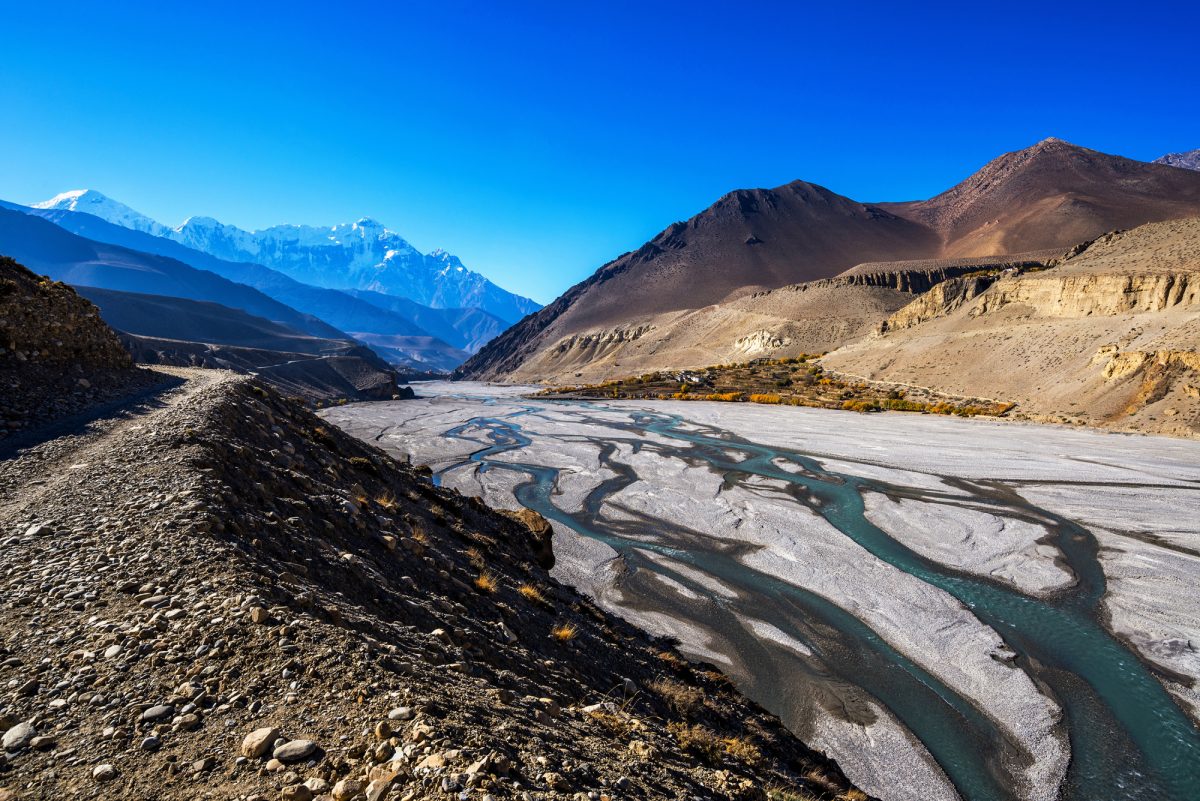
Upper Mustang trekking highlights
Traditional Tibetan Buddhist culture
With classical Tibetan Buddhist culture severely restricted in Tibet itself, Upper Mustang is now one of the best places to see it flourishing. But take note: Traditional life is changing here too, thanks to increased road construction and development.
Walled town of Lo Manthang
The walled capital of Upper Mustang, Lo Manthang, is a web of narrow white-washed streets and imposing monasteries and palaces. It’s one of the few remaining walled towns in the Himalayas and viewed from one of the surrounding hilltops, as the sun sinks low in the evening sky, it’s simply unforgettable.
Ancient Buddhist cave art
The sandstone cliffs, canyons and gorges of Upper Mustang are riddled with caves, many of which once housed monks, ascetics and entire communities. The former occupants of some of the caves left behind extraordinary frescos. Getting to many can be a real adventure and it’s likely that more remain to be discovered.
Monasteries and Buddhist architecture
Many of the fortress-like monasteries of Upper Mustang lie alongside former trans-Himalayan trade routes running from India to Tibet, and grew rich on this trade. Visit one of these monasteries today and you can see masterpieces of Tibetan Buddhist art and hundreds of glittering icons and statues.
Nomadic culture
Nomadic culture clings on in Upper Mustang and you’re likely to pass some of the dark, felt hair nomad tents — but beware of the often ferocious Tibetan mastiff dogs standing guard. If you get the chance, pop in for a cup of salty yak butter Tibetan tea, and a chat about nomadic life.
Colourful gorges
Although Upper Mustang doesn’t offer the high peak drama of many other Nepalese trekking regions, it does have gorges of glittering rainbow rock: Red, white, black, yellow and even blue, Upper Mustang is like the Grand Canyon with tins of paint thrown over it.
Exploration possibilities
The classic trekking route is straight up and down along the western, and more developed, side of the valley to Lo Manthang. Increasingly though, trekkers are making an epic loop up the west bank to Lo Manthang and then down the higher, wilder and far more remote eastern side. For those who really want to go off kilter though, Upper Mustang has a couple of highly adventurous routes including the crossing of the Teri La or the even more daunting Saribung La. Very rarely trekked, neither one is for normal trekkers; both require full expedition support and a willingness to blaze your own trail. It’s also possible to walk from Upper Mustang into the Dolpo region by one of several routes, though all are extremely demanding and take three to four weeks.
Tiji Festival
The spring festival of Tiji (or Tenche) is a three-day event in Lo Manthang during which masked dancers re-enact the battle between Dorje Jono, a Buddhist deity, and his demon father, to save Mustang from a terrible drought. Monks burn an effigy of the demon in order to rid the town of bad spirits and a huge tongdrol (a traditional Tibetan Buddhist painting) is unfurled from the palace walls. The main dancer (known as Tsowo) completes a three-month retreat before the festival, which also sees members of the Mustang royal family join in the sacred dance.
The festival normally takes place in May and the town gets very busy with trekking tour groups. Book accommodation in advance or be prepared to camp.
Upper Mustang trekking information
TIMS permit required. Upper Mustang is a restricted area. A US $500 per person, 10-day permit is required. Additional days after day 10 are charged at US $50 per day. A minimum group size of two people is required and you must be on an organised trek.
Unlike much of Nepal, Upper Mustang is totally within the Himalayan rain shadow and this means that the best time to trek is May to October, unlike most other parts of the country.
While it’s not impossible to trek here in mid-winter you’ll find many passes snowed in, accommodation closed and many villages almost deserted as local people leave the area for lower, warmer parts of Nepal. Be aware of the unrelenting afternoon winds which can make trekking – and camping for those not wanting to stay in teahouses — unpleasant.
Homestays are available in villages along the main trekking routes and they are often wonderfully atmospheric. Due to the lack of rain, the people of Mustang (known as the Lobas) build their houses out of compressed earth on stone foundations. Much of the countryside is made up of endless yellow and grey hills that are being eroded by the biting wind. Self-sufficient camping is necessary outside of the main villages.
Road construction is eating away at the standard route and changing life fast on the western bank of the river valley and in Lo Manthang.
Upper Mustang trekking FAQs
Your questions, our expert answers
Question
Do you still recommend trekking in Upper Mustang, with all the new road construction?
Answer
It's true that there has been significant road building in Upper Mustang over the past few years. The government intends to continue upgrading the road to make this one of the key border crossings to Tibet. These roads have a significant impact on the culture and environment of Upper Mustang and they've had a very negative impact on trekking in parts of Upper Mustang. The road, though far from busy, has regular truck traffic along it and the dust these vehicles kick up doesn't make for a pleasant trekking experience, plus the character of roadside villages has changed dramatically.
However: this only affects the western side of the river valley. On the eastern side of the valley there is currently no road construction and life carries on in much the way it has been for years. Trekking routes here are quiet and unaffected by vehicle traffic whereas the villages remain small and traditional. There are many routes you can do on the eastern side of the valley to villages, caves and monasteries and the scenery is great.
Personally, I would not pay for an Upper Mustang permit if I were only going to trek the western side, but I would certainly pay for it to trek the eastern side. In my opinion the best option is to drive up the western side of the valley to Lo Manthang and then slowly walk down the eastern side. You'd also want a few days exploring side valleys and areas to the north, east and west of Lo Manthang. If you do this then Upper Mustang is as good as it has always been.

